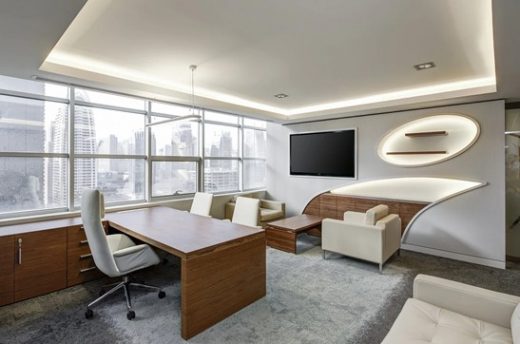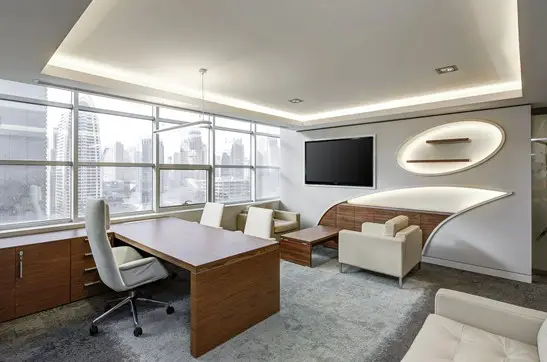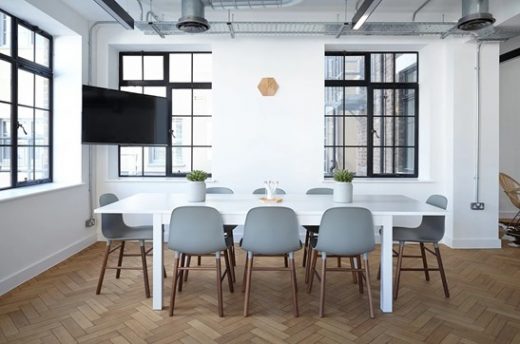The impact of office design on workplace productivity, Building work space design, Commercial property
Impact of Office Design on Workplace Productivity
26 Feb 2021
Working in an office building, regardless of the size or type of business conducted, can have a real and measurable mental and physical impact. Where you are situated within the building, the quality of the air you breathe, access to lighting, furniture functionality, and even how a particular space looks will affect how workers feel throughout their workday.
This relationship between office design and employees’ comfort and feel is far from tenuous and will directly impact productivity throughout the day. Here are some tangible ways you can affect productivity in any office space with the drop of a hat.
Temperature and Air Quality
Physically, temperature and air quality directly impact how someone works and feels throughout the day. To be comfortable in a workspace, it is essential that the temperature is kept well within the moderate range and doesn’t experience sharp dips or sudden spikes.
To combat this, all office spaces should be adequately insulated and cooled. The same thing can be said for air quality. In many places, indoor pollutants are higher than contaminants outdoors. If workers do not have access to fresh or well-filtered air, their mental capacity may suffer. Plus, poor ventilation and stale air can result in an influx of sick leaves, which can hinder business productivity.
Lighting
To be able to see your work is a must accurately, and office space is no exception. Moreover, access to natural light has an irreplaceable impact on employees by boosting energy levels, increasing job satisfaction, and reducing absentee days. The thing is, not every space in an office building can have access to multiple windows or natural light inlets. Due to this limitation, office design is crucial in facilitating light reflection and penetration into the workspace. By allowing employees to benefit from the positive physiological responses that natural light can make illicit, productivity will rise significantly.

Functional Workspace
Functionality begets productivity, something widely known in both the business and design sectors. To truly make the most of office space, all of its surfaces, furniture, and even negative space should serve a purpose. For this, enlisting the help of a design firm or specifically geared office fit-out should be your first step. Companies like the esteemed Vestra Workspace can easily design and engineer every aspect of your building to see tangible results. Incorporating highly functional pieces, for example, a rolling door or bookshelf, can quickly transform a meeting room into a sitting room or vice versa. This conserves space, saves time, and ultimately increases overall productivity by concentrating employee energy back into the business.
Visual Aids
The best thing you can do to energize and inject some creativity into your workforce is to design with inspiration in mind. It is proven that adding some color to your office walls can reduce stress, boost creativity, and raise morale. Additionally, adding paintings or other beautifully made visual aids has increased discussion, curiosity, and employee enthusiasm. It might be wise to tailor the graphic template to your company’s specific industry to see different results. For example, if you are operating a wellness-related business, you might consider bringing plants, waterfalls, or other natural healing components into the office. This will also bolster brand authenticity and employee drive and motivation.
Office Furniture
Office furniture is something that simply cannot be an afterthought when it comes to designing an office- particularly as it pertains to productivity. Purchasing and maintaining adequate ergonomic desks, chairs, and other workspace components will have direct and lasting physical and mental effects on employees.
The key in the case of office equipment is to ensure that all furniture encourages neutral bodily positions. This will avoid any unnecessary strain or stress, therefore optimizing employee comfort and efficiency. Furniture is a considerable productivity component because it is an office design element that employees will most frequently and directly interact with. This is a workplace’s opportunity to demonstrate how they prioritize their workforce rather than their bottom line.
Impact of Office Design on Workplace Productivity Summary
Design can often be seen as frivolous or independent of the primary goal of doing business. Office interiors are notoriously neglected because they aren’t considered pertinent to a business’s operation. However, companies are increasingly discovering this couldn’t be further from the truth. What’s more, is that the concept of design can be unfairly narrowed and misconstrued. Extending well past throw cushions and chandeliers, design can increase functionality, flow, comfort, and health benefits of a workspace.
Design informs where, how, and when work is being done in the office- and for these reasons can be one of the most fundamental influencers of productivity and success in a workplace.
Comments on this guide to The Impact of Office Design on Workplace Productivity article are welcome.
Workplace and Office
Workspace + Offices Posts
How can you redesign your workplace with HRIS?
Accessible Workplace In Ontario
How to Increase Safety in Your Workplace
Common but avoidable workplace accidents
Commercial Property
Commercial Architecture Design
Comments / photos for the The Impact of Office Design on Workplace Productivity page welcome






